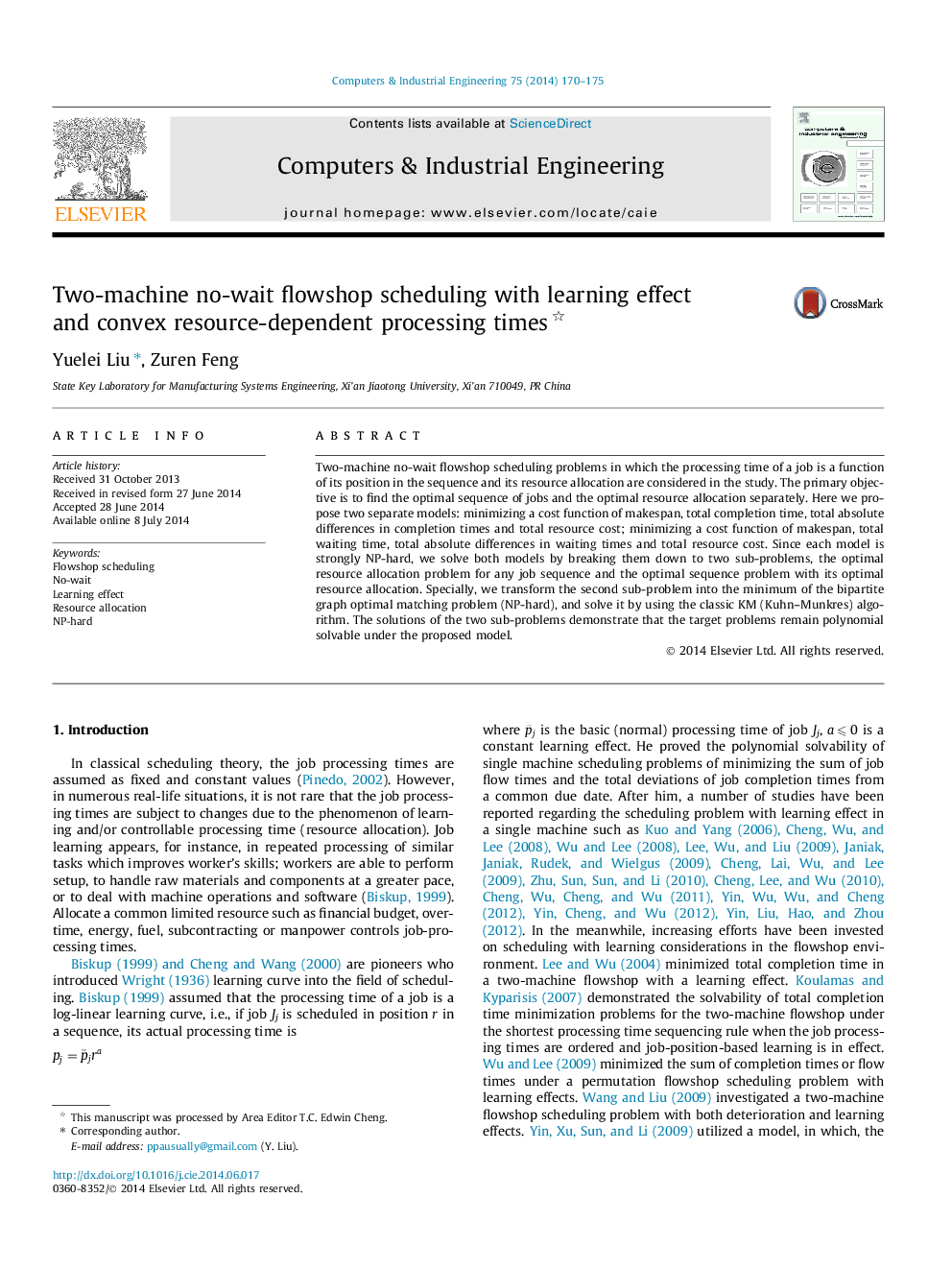| Article ID | Journal | Published Year | Pages | File Type |
|---|---|---|---|---|
| 1134035 | Computers & Industrial Engineering | 2014 | 6 Pages |
•We consider the learning effects and the controllable processing times simultaneously in two-machine no-wait flowshop.•The objective function is to minimize a cost function of the processing times and the resource allocation.•The problem is strongly NP-hard.•We transform the optimal problem into the minimum of the bipartite graph optimal matching problem.•The target problems remain polynomial solvable under the proposed model.
Two-machine no-wait flowshop scheduling problems in which the processing time of a job is a function of its position in the sequence and its resource allocation are considered in the study. The primary objective is to find the optimal sequence of jobs and the optimal resource allocation separately. Here we propose two separate models: minimizing a cost function of makespan, total completion time, total absolute differences in completion times and total resource cost; minimizing a cost function of makespan, total waiting time, total absolute differences in waiting times and total resource cost. Since each model is strongly NP-hard, we solve both models by breaking them down to two sub-problems, the optimal resource allocation problem for any job sequence and the optimal sequence problem with its optimal resource allocation. Specially, we transform the second sub-problem into the minimum of the bipartite graph optimal matching problem (NP-hard), and solve it by using the classic KM (Kuhn–Munkres) algorithm. The solutions of the two sub-problems demonstrate that the target problems remain polynomial solvable under the proposed model.
